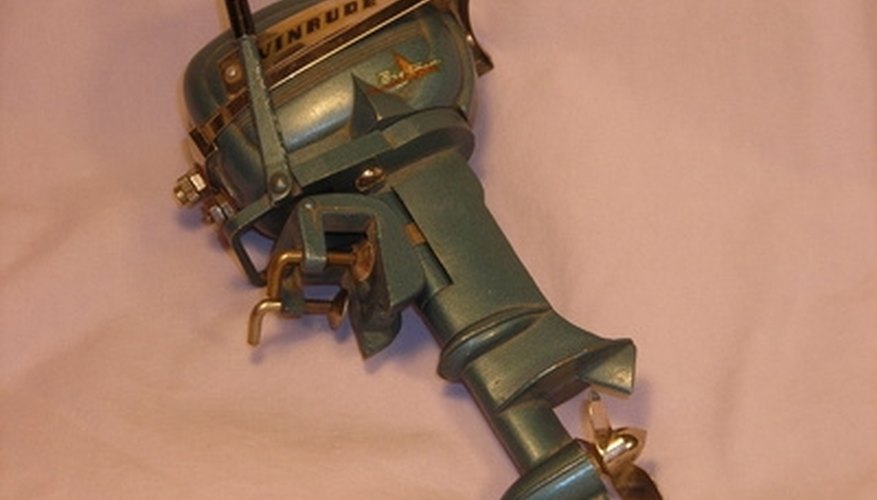
Squeeze bulbs on outboard motor fuel hoses prime empty fuel lines so that the outboard engine’s integral fuel pumping system, which only works with liquid, can pull the fuel from the fuel tank to the engine. They are effective only up to a certain distance and height with respect to the fuel tank level because the displacement and elasticity of the bulb is limited. Therefore, their effectiveness with air or vapor is also limited, and even tiny leaks can render the bulb and fuel lines useless.
Fuel Line Problems
Squeeze bulbs have a check valve at both ends that allows fuel to only flow in one direction--from the tank to the engine. When the outboard is running normally, the engine’s fuel pumps create a slight vacuum in the fuel hose. Atmospheric pressure in the tank through the vent pushes the fuel from the tank to the engine. In this case, the check valves are both slightly open and allowing fuel flow at the rate that the engine is using it. When the day’s boating is over, most boaters disconnect the hose at the tank, and allow the engine to run itself out of fuel. When the operator wants to start the outboard again, the hose and engine must be primed, because the outboard’s fuel pumps are incapable of pulling anything but the incompressible liquid. Therefore, the bulb must be squeezed repeatedly until the entire fuel hose is full of liquid fuel again.
Suction vs. Pressure
Empty squeeze bulbs rely solely on their own elasticity and complete integrity of their two check valves to pump air until fuel fills the bulb and hose. Air is compressible and has its own spring rate that tends to minimize the capability of the bulb to pull on its expansion part of the cycle. Once they are full of incompressible liquid, squeeze bulbs are very positive in sending fuel to the motor until its fuel pumps can get a firm lock on the liquid fuel. Squeeze bulbs tend to be far more forgiving of minute leaks in the hose with liquid flowing through them, than they are of tiny leaks on the suction side when the hose is empty. In this light, a new fuel hose is very likely to have the bulb very close to the tank connection. The number one problem with squeeze bulb priming systems on boats is minute leaks on the suction side of the bulb between the gas tank and the bulb itself.
Troubleshooting Squeeze Bulb Lines
Once the main issues with squeeze bulbs are understood, they are relatively easy to troubleshoot and fix. First, check the bulb for aging, loss of elasticity, or cracking. Then check for leaks in the hose connections including the fitting on the tank. Replace any crimp type clamps with screw-turn hose clamps. Check for cracking or softening of hoses. If fuel still refuses to flow, new aftermarket replacement squeeze bulb hoses are inexpensive and easy to integrate into the existing fuel system.
Long Term
Most seasoned boaters replace the primer squeeze bulb and hose assembly once every two years, and keep the last used one for a good spare.
References
Writer Bio
Pauline Gill is a retired teacher with more than 25 years of experience teaching English to high school students. She holds a bachelor's degree in language arts and a Master of Education degree. Gill is also an award-winning fiction author.



